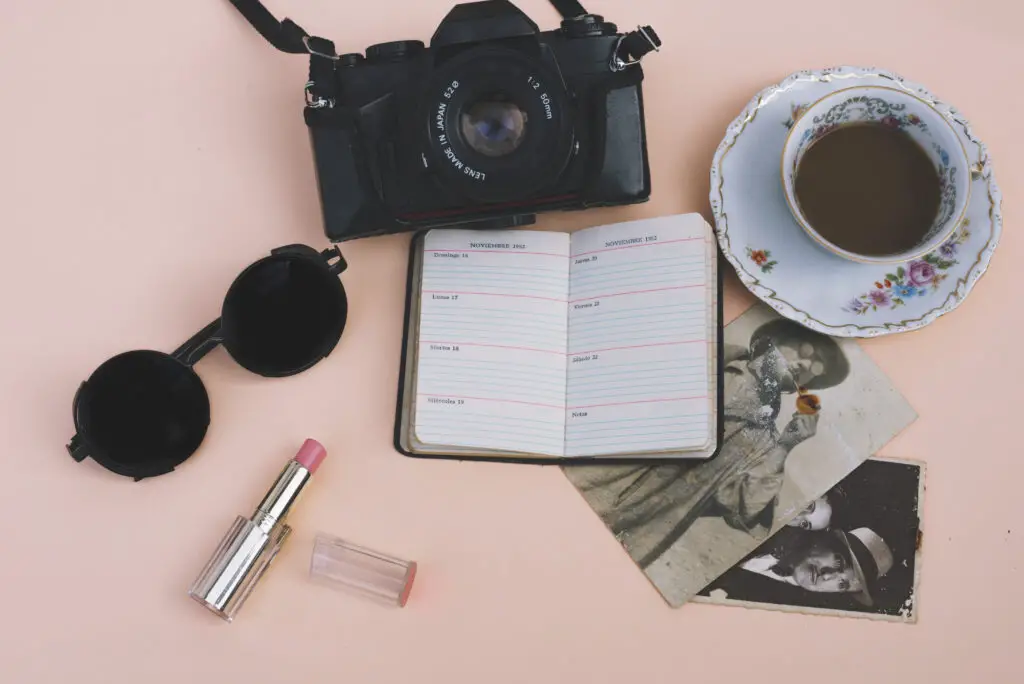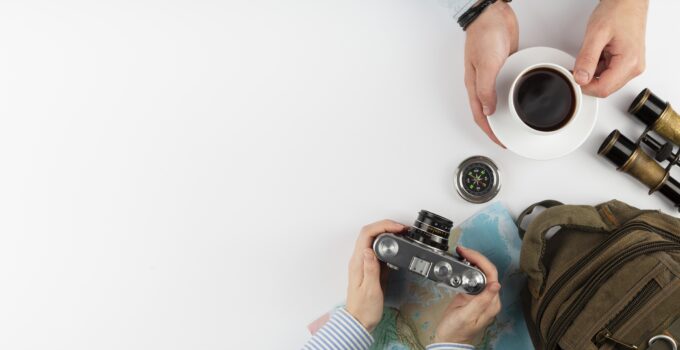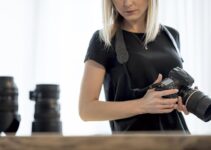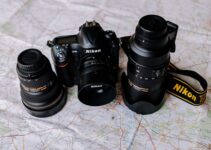Have you ever wondered how much a camera bag costs? Camera bags vary widely in price, from budget-friendly options around $20 to professional-grade bags that can exceed $500 or more.
The cost depends on factors like brand reputation, materials used (such as weather-resistant fabrics or genuine leather), size, and additional features like customizable compartments or built-in charging ports.
Whether you’re a hobbyist photographer or a seasoned professional, choosing the right camera bag involves balancing your budget with your specific needs for durability, comfort, and functionality in protecting your valuable camera equipment.
Here how to use camera bag dividers?
How much does a camera bag cost?
The cost of a camera bag can vary widely depending on several factors such as brand, size, material, and features.
Basic camera bags designed to carry a single camera body and a few accessories can start at around $20 to $50. These tend to be made from nylon or polyester and offer minimal padding and organization.
Mid-range camera bags, offering better padding, more compartments, and sometimes weatherproofing, typically range from $50 to $150.
They are suitable for carrying additional lenses and accessories, providing more protection and convenience.
High-end camera bags, often made from premium materials like leather or high-grade nylon, can cost anywhere from $150 to $500 or more.
These bags usually offer extensive padding, customizable dividers, ergonomic designs, and additional features like laptop compartments or tripod holders.
They are favored by professional photographers who need durable, versatile, and protective gear transportation solutions.
Ultimately, the price reflects the bag’s quality, durability, and the level of protection it provides for valuable camera equipment.
Types of Camera Bags
1. Shoulder Bags
Shoulder bags are a popular choice among photographers for their easy access and versatility.

They typically feature a single strap that allows the bag to be carried over one shoulder or across the body. Shoulder bags come in various sizes, suitable for carrying one or more camera bodies, lenses, and accessories.
They often have padded compartments and adjustable dividers to organize gear efficiently. Some models include additional pockets for personal items like a wallet or keys.
Photographers who need quick access to their equipment while shooting prefer shoulder bags, as they can quickly swing the bag to their front and retrieve gear without setting it down.
Here, how to clean manfrotto camera bag?
2. Backpacks
Camera backpacks are designed for photographers who need to carry substantial amounts of gear comfortably over longer distances.
They distribute weight evenly across the back and shoulders, with padded compartments to protect cameras, lenses, and accessories.
Backpacks often feature multiple compartments, including dedicated spaces for laptops, tripods, and personal items. They offer ergonomic benefits such as adjustable straps and breathable padding for extended wear.
Backpacks are favored by outdoor photographers, travelers, and those who need hands-free mobility while hiking or navigating crowded environments.
3. Sling Bags
Sling bags combine the benefits of shoulder bags and backpacks by offering quick access to gear with the comfort of single-shoulder carrying.
They feature a single strap that allows the bag to be swung from back to front, providing easy access to camera equipment without fully removing the bag.
Sling bags typically have padded compartments and adjustable dividers to organize gear securely.
They are popular among photographers who need mobility and fast access during dynamic shooting situations, such as street photography or events.
4. Holster Bags
Holster bags are compact, form-fitting cases designed to hold a single camera body with a lens attached. They offer quick draw access, securely holding the camera at the photographer’s hip or chest.
Holster bags provide excellent protection against bumps and scratches while keeping the camera readily accessible for fast shooting.
They are ideal for photographers who want minimal bulk and maximum accessibility during active shoots.
5. Roller Bags
Roller bags are designed for photographers who travel with a significant amount of equipment and prefer the convenience of wheeled transportation.
These bags resemble small suitcases with padded compartments for cameras, lenses, and accessories.
Here, how to clean a tenba polyethelene camera bag?
Roller bags protect gear during transport and provide easy access through zippered openings. They typically include telescoping handles and durable wheels for smooth navigation through airports, city streets, or rough terrain.
Roller bags are favored by studio photographers, videographers, and professionals who need to transport heavy equipment with minimal physical strain.
6. Hard Cases
Hard cases provide the ultimate protection for camera gear against extreme conditions such as impacts, moisture, and dust.
Made from materials like hard plastic or aluminum, they feature customizable foam inserts that securely hold cameras, lenses, and accessories.
Hard cases often come with secure locking mechanisms and watertight seals to protect valuable equipment during travel or in harsh environments.
They are essential for photographers working in rugged outdoor settings, on location shoots, or transporting gear via air travel where durability and security are paramount.
Material and Build Quality
Leather
Leather camera bags are esteemed for their durability, classic aesthetic, and ability to age beautifully over time.
They offer excellent protection against minor impacts and scratches while providing a stylish option for photographers. Leather bags often feature soft interiors and sturdy construction, making them suitable for carrying cameras and lenses securely.
However, they require occasional maintenance to preserve their quality, such as conditioning to prevent drying or cracking.
Leather bags are favored by photographers who value both functionality and aesthetics, as they blend protection with a timeless, professional look.
Nylon
Nylon is a popular choice for camera bags due to its durability, lightweight nature, and water-resistant properties.

Nylon bags provide adequate protection against scratches and moderate impacts while offering flexibility for various bag designs.
They are often reinforced with padding and dividers to protect delicate camera gear. Nylon bags are easy to clean and maintain, making them suitable for both indoor and outdoor use.
They are preferred by photographers who need a balance of protection, lightweight construction, and versatility in different shooting environments.
Polyester
Polyester camera bags are known for their affordability, lightweight design, and resistance to stretching and shrinking. They offer decent protection against light rain and scratches, making them suitable for casual use or as secondary bags for carrying camera gear.
Polyester bags are often supplemented with padding to safeguard cameras, lenses, and accessories from minor impacts.
They are easy to clean and maintain, retaining their shape and color over time. Polyester camera bags appeal to photographers seeking cost-effective options without compromising basic protection and functionality.
Canvas
Canvas camera bags combine durability with a stylish, rustic appearance. They are typically made from cotton canvas, which is sturdy and resistant to abrasions. Canvas bags offer good protection against light rain and scratches, though they may not be as water-resistant as nylon or polyester.
They often feature padded interiors and adjustable dividers to secure camera equipment effectively. Canvas bags require occasional cleaning and may benefit from waterproofing treatments for enhanced protection in wet conditions.
They appeal to photographers who appreciate a blend of rugged durability, classic design, and practical functionality in their camera bags.
Waterproof and Weather-resistant Materials
Camera bags made from waterproof or weather-resistant materials provide superior protection against moisture, rain, and harsh weather conditions. These materials may include specially treated nylon, polyester, or synthetic fabrics designed to repel water and keep camera gear dry.
Waterproof camera bags feature sealed seams, water-resistant zippers, and sometimes additional rain covers for added protection during heavy downpours.
They are essential for photographers working in unpredictable outdoor environments or those who frequently shoot in rainy or snowy conditions. Waterproof and weather-resistant camera bags offer peace of mind, ensuring that expensive camera equipment remains safe and functional even in challenging weather conditions.
Size and Capacity
Small Camera Bags
Small camera bags are compact and designed to carry essentials like a single camera body with a lens attached and a few accessories.
They are lightweight and portable, ideal for photographers who prefer minimalistic setups or need quick access to their gear.
Small bags often feature padded compartments and adjustable dividers to protect and organize equipment effectively.
They are suitable for casual outings, street photography, or situations where mobility and ease of use are paramount.
Small camera bags are versatile and can be easily carried by hand, over the shoulder, or across the body, providing convenient storage without added bulk.
Medium Camera Bags
Medium camera bags strike a balance between compactness and capacity, offering enough space to accommodate a camera body, multiple lenses, and additional accessories like batteries, memory cards, and a flash unit.
Here, how do you support a heavy camera lens?
They are larger than small bags but still compact enough for travel and outdoor shooting. Medium bags typically feature well-padded compartments, adjustable dividers, and exterior pockets for organizing gear efficiently.
They are versatile, suitable for photographers who require more equipment on hand without sacrificing mobility.
Medium camera bags can be carried over the shoulder, across the body, or as backpacks, providing comfort and accessibility during extended shoots or travel.
Large Camera Bags
Large camera bags are designed for photographers who need to carry extensive gear, including multiple camera bodies, numerous lenses, flashes, tripods, and other accessories.
They offer ample space and organizational features to accommodate large quantities of equipment securely.
Large bags often include customizable dividers, padded compartments, and additional pockets for storing personal items or smaller accessories.
They are typically worn as backpacks or carried with sturdy handles for ease of transport over longer distances.
Large camera bags are favored by professional photographers, studio photographers, and those working in specialized fields like wildlife or sports photography where carrying a variety of gear is essential.
Customizable and Expandable Options
Customizable and expandable camera bags cater to photographers who require flexibility in organizing and expanding their gear storage.
These bags often feature adjustable dividers, modular compartments, or removable inserts that can be configured to fit specific equipment needs.
Expandable options may include zippered expansions or modular attachments that increase the bag’s capacity as needed. They allow photographers to adapt the bag layout to accommodate varying equipment setups or personal preferences.
Customizable and expandable camera bags offer versatility and longevity, adapting to changing gear requirements or shooting styles over time.
They are ideal for photographers who value organizational options and the ability to tailor their gear storage solutions to specific shooting scenarios or evolving equipment collections.
Brand and Reputation
High-end Brands
High-end camera bag brands are known for their superior craftsmanship, innovative designs, and use of premium materials.
These brands often prioritize durability, functionality, and aesthetics, catering to professional photographers and enthusiasts who demand the best in both performance and style.
High-end brands invest in research and development to create bags that offer maximum protection for expensive camera equipment, often incorporating advanced features like customizable compartments, ergonomic designs, and weather-resistant materials.
Examples include brands like Peak Design, Think Tank Photo, and ONA, which are renowned for their high-quality craftsmanship and attention to detail.
Mid-range Brands
Mid-range camera bag brands offer a balance between quality and affordability, appealing to photographers who seek reliable products without the premium price tag of high-end brands.
These brands provide well-constructed bags with adequate protection and organizational features for camera gear. They often use durable materials like nylon or polyester and include padded compartments and adjustable dividers to safeguard equipment during transport.
Mid-range brands focus on practicality and functionality, ensuring their bags meet the needs of amateur photographers, hobbyists, and professionals looking for reliable everyday solutions.
Examples include Lowepro, Case Logic, and Manfrotto, which offer a range of options suitable for various photography styles and budgets.
Budget-friendly Brands
Budget-friendly camera bag brands prioritize affordability while still offering basic protection and functionality for camera equipment.
These brands cater to entry-level photographers or those on a tight budget who require simple yet effective solutions for carrying gear.
Budget-friendly bags are often made from economical materials like polyester or canvas, with minimal padding and fewer organizational features compared to higher-priced options.
Despite their lower cost, these brands aim to provide adequate protection against scratches and light impacts while offering essential storage compartments for cameras, lenses, and accessories.
Examples include AmazonBasics, USA Gear, and Neewer, which offer economical choices for photographers seeking practical and budget-conscious camera bag solutions.
Emerging and Niche Brands
Emerging and niche camera bag brands focus on innovative designs, unique features, and niche markets within the photography community.
Here, how to make a camera tripod bag?
These brands often cater to specific needs or preferences that mainstream brands may not fully address. They may specialize in eco-friendly materials, customizable designs, or bags tailored for specific types of photography such as drone photography or underwater shooting.

Emerging brands emphasize creativity, craftsmanship, and sometimes sustainability, appealing to photographers who value distinctiveness and functionality in their gear.
While smaller in scale compared to established brands, emerging and niche brands contribute to the diversity of camera bag options available, offering specialized solutions that can meet the specific demands of adventurous photographers or those with unique equipment requirements.
Additional Features
Padded Compartments
Padded compartments provide cushioning and protection for delicate camera gear, minimizing the risk of damage from bumps or drops during transport.
Adjustable Dividers
Adjustable dividers allow photographers to customize the interior layout of their bag, providing flexibility to organize equipment according to individual needs and preferences.
External Pockets and Storage
External pockets offer convenient storage for quick access to items like filters, batteries, memory cards, or personal belongings without opening the main compartment.
Tripod Holders
Tripod holders secure tripods externally or internally on the bag, providing stability and freeing up space inside for other equipment.
Anti-theft Features
Anti-theft features such as lockable zippers, RFID-blocking pockets, or slash-resistant materials enhance security against theft or unauthorized access to valuable camera gear.
Style and Aesthetics
Style and aesthetics reflect the bag’s design, materials, and color choices, influencing both functionality and personal preference in how the bag complements the photographer’s overall style and image
Comparing Prices by Types
Basic Camera Bags
Basic camera bags are typically affordable and designed for casual photographers or beginners. They offer fundamental protection and storage for a single camera body with a lens and a few accessories.
These bags are often made from materials like polyester or nylon, with minimal padding and basic organizational features. Prices for basic camera bags can range from $20 to $50, depending on the brand and size.
Professional Camera Bags
Professional camera bags are built to withstand rigorous use and provide maximum protection for expensive camera gear.
They often feature high-quality materials such as durable nylon, reinforced stitching, and extensive padding. These bags include customizable compartments, ergonomic designs, and advanced features like weatherproofing or dedicated laptop compartments.
Prices for professional camera bags typically start around $150 and can exceed $500 for premium brands and larger capacities.
Specialized Camera Bags
Specialized camera bags cater to specific needs such as drone photography, underwater shooting, or carrying extensive lighting equipment.
These bags are designed with specialized compartments, modular options, or unique features tailored to the requirements of niche photography practices.
Prices for specialized camera bags vary widely based on complexity and features, ranging from $100 to over $1000 for highly specialized or custom-made solutions.
These bags prioritize functionality and protection for specialized equipment, making them essential tools for photographers with specific professional or hobbyist needs.
Here, for shoulder pain what kind of camera bag should you use?
Average Cost Breakdown
Entry-level Camera Bags
Entry-level camera bags are designed for beginners or hobbyists who need basic protection and storage for their camera equipment without spending a significant amount.
These bags are typically made from economical materials like polyester or canvas, with minimal padding and basic organizational features.
They often accommodate a single camera body with a lens and a few accessories. Entry-level camera bags prioritize affordability and simplicity, with prices ranging from $20 to $100 depending on size and brand.
They are suitable for casual use, travel, or occasional photography outings where lightweight and inexpensive storage solutions are sufficient.
Mid-tier Camera Bags
Mid-tier camera bags offer a balance between affordability and enhanced features, appealing to enthusiasts and amateur photographers who require more robust protection and organizational options.
These bags are constructed from durable materials like nylon or synthetic blends, with better padding and more compartments for multiple cameras, lenses, and accessories.
They often include features like adjustable dividers, external pockets, and ergonomic designs for comfort during extended use.
Prices for mid-tier camera bags generally range from $100 to $300, offering reliable functionality and versatility for various photography styles and environments.
High-end Camera Bags
High-end camera bags are crafted for professional photographers who demand superior quality, durability, and specialized features for intensive use and protection of expensive camera gear.
These bags are constructed from premium materials such as high-grade nylon, leather, or specialized fabrics with advanced waterproofing and impact-resistant properties.
They feature extensive padding, customizable compartments, ergonomic designs, and additional features like tripod holders or laptop compartments.
Prices for high-end camera bags typically start at $300 and can exceed $1000 for luxury brands or large-capacity models.
They are designed to withstand challenging conditions, offer maximum protection, and provide professional-grade functionality for demanding photography assignments and environments.
Buying New vs. Used
Pros of Buying New
Buying a new camera bag ensures that you receive a product in pristine condition, free from wear, tear, or previous damage. New bags often come with warranties, providing peace of mind regarding their durability and quality.
You can choose from the latest models and designs, incorporating the most recent advancements in materials and features.
New bags also offer the satisfaction of owning a product that has not been previously owned or used by another individual.
Cons of Buying New
New camera bags typically come with a higher price tag compared to used options, especially for high-end or specialized models.
The initial investment can be significant, particularly for professional-grade bags with advanced features. Additionally, new bags may require a break-in period to become more comfortable or conform to your specific needs and preferences.
Pros of Buying Used
Buying a used camera bag often allows you to acquire a high-quality product at a lower cost than purchasing new.
Used bags may already be broken in, offering immediate comfort and usability without the need for a break-in period.
This option is ideal for budget-conscious photographers seeking affordability or looking to test different bag styles and brands without committing to a new purchase.
Depending on the seller, used bags may still be in good condition with minimal signs of wear, providing reliable protection for camera equipment.
Cons of Buying Used
Used camera bags may show signs of wear and tear, potentially including cosmetic blemishes, faded colors, or worn-out padding.
The condition of used bags can vary widely depending on previous usage and maintenance practices by the previous owner.
Without a warranty, there may be limited recourse if the bag develops issues or fails to meet expectations shortly after purchase.
Additionally, finding a specific model or design in good condition as a used item can be challenging, especially for newer or less common models.
Best Camera Bags for Different Budgets
Under $50
Camera bags under $50 are typically basic in design and functionality, offering essential protection for a single camera body with a lens and a few accessories.
They are often made from economical materials like polyester or nylon, with minimal padding and basic organizational features.
These bags are suitable for beginners, casual photographers, or those looking for a budget-friendly option for occasional use or travel.
While they may lack advanced features like weatherproofing or extensive padding, they provide adequate protection against scratches and minor impacts.
Popular brands in this price range include AmazonBasics and Neewer, offering simple yet functional solutions for basic camera gear storage.
$50 to $100
Camera bags in the $50 to $100 range offer improved durability, additional features such as adjustable dividers, and better organizational options compared to lower-priced options.
They can accommodate one or two camera bodies with lenses and accessories, making them suitable for amateur photographers or enthusiasts who need more versatility and protection for their gear.
Bags in this range may feature padded compartments, external pockets, and comfortable carrying options like shoulder straps or handles. Brands like Lowepro and Case Logic provide a variety of mid-range camera bags that balance affordability with enhanced functionality and design.
$100 to $200
In the $100 to $200 range, camera bags offer even greater durability, advanced features, and customization options. These bags are designed for photographers who require reliable protection and organization for multiple cameras, lenses, and accessories.
They often include features like weather-resistant materials, ergonomic designs, reinforced padding, and versatile carrying options such as backpacks or sling bags.
Bags in this range cater to both hobbyists and semi-professionals seeking quality and functionality without the premium price tag of high-end models.
Brands like Manfrotto and Think Tank Photo offer a wide selection of mid-range camera bags that provide excellent value and performance for various photography styles and environments.
Over $200
Camera bags priced over $200 are considered high-end options, offering superior craftsmanship, durability, and advanced features tailored for professional photographers.
These bags are constructed from premium materials like high-grade nylon, leather, or specialized fabrics with robust padding and extensive organizational compartments.
They often include features such as customizable dividers, waterproofing, impact resistance, and ergonomic designs for comfort during long shoots or travel.
High-end bags are designed to withstand harsh conditions and provide maximum protection for expensive camera equipment.
Brands like Peak Design and ONA are renowned for their high-end camera bags, catering to professionals who demand top-tier quality, functionality, and style in their gear storage solutions.
Frequently Asked Questions
What is the average price range for camera bags?
Camera bags can range widely in price depending on factors like brand, size, material, and features. On average, prices can start as low as $20 for basic models and go up to over $500 for high-end, specialized bags.
What factors influence the cost of a camera bag?
The cost of a camera bag is influenced by factors such as the material it’s made from (e.g., nylon, leather), its size and capacity, additional features like padding or weatherproofing, and the reputation of the brand.
Are there affordable camera bags that still provide adequate protection?
Yes, there are many affordable camera bags available that provide basic protection for camera equipment. Brands like AmazonBasics and USA Gear offer budget-friendly options starting from around $20 to $50.
What should I consider when deciding between a budget-friendly and a more expensive camera bag?
Consider your specific needs for protection, storage capacity, and features. Budget-friendly bags may suffice for casual use, while more expensive bags offer durability, advanced features, and often come with longer warranties.
Are high-end camera bags worth the investment?
High-end camera bags are typically worth the investment for professional photographers or enthusiasts who frequently travel or work in challenging environments.
They offer superior protection, durability, and often include advanced features like customizable compartments and weatherproofing.
Can I find used camera bags at a significant discount?
Yes, you can often find used camera bags at lower prices compared to new ones. Websites like eBay, Craigslist, or local camera shops may offer good deals, though it’s important to inspect the bag for wear and tear before purchasing.
Do different types of camera bags vary in price?
Yes, different types of camera bags (such as shoulder bags, backpacks, sling bags, etc.) vary in price based on their design, materials, and intended use.
Backpacks and roller bags tend to be more expensive due to their larger size and additional features, while holster bags or small shoulder bags are generally more affordable.
Conclusion
The cost of a camera bag can vary significantly depending on its size, material, brand, and features.
Basic models designed for minimal gear protection may start as low as $20, while high-end, specialized bags crafted from premium materials can exceed $500.
The price reflects the bag’s durability, functionality, and the level of protection it offers for valuable camera equipment.
Whether opting for a budget-friendly option or investing in a professional-grade bag, photographers should consider their specific needs, shooting conditions, and desired features to ensure they select a bag that provides adequate protection and convenience for their equipment










